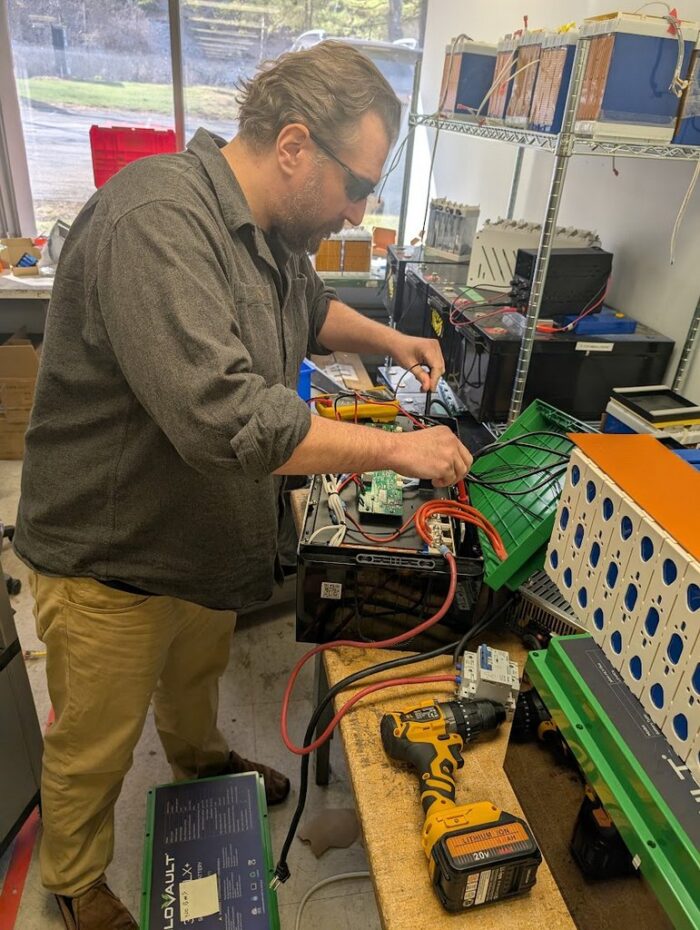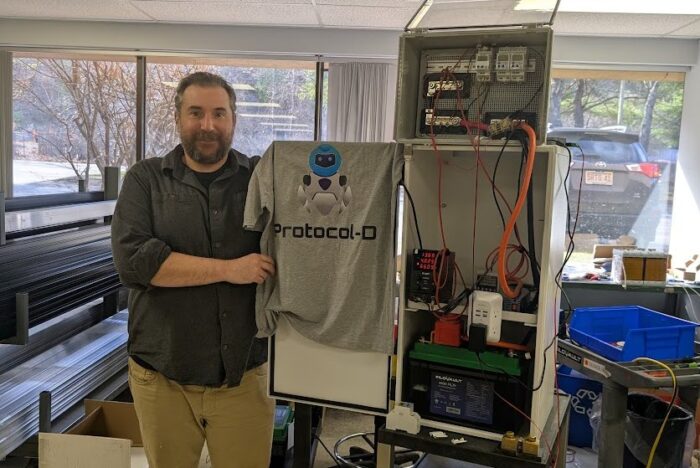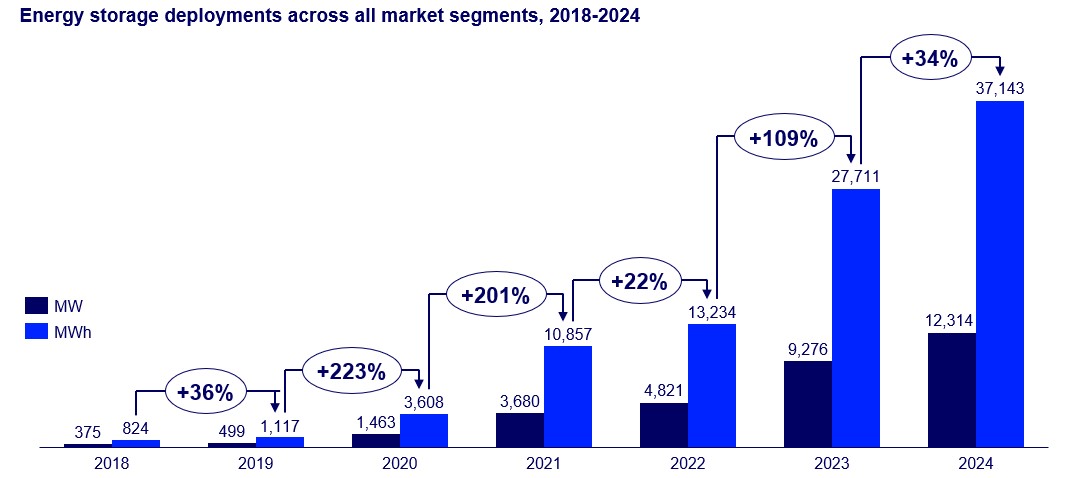Installed KiloVault? Solamp is here to help

As the battery attachment rate soars, so too will the number of abandoned systems and defunct products. That is just the nature of the market. But these inevitable problems mean a new business opportunity for someone else.
Chris Brown seized such an opportunity after the company he worked for, Alternative Energy Store Inc., went kaput in April 2024. Alternative Energy Store Inc. was the parent company that owned altE, a renowned solar and battery distributor in the Northeast, Real Goods, and KiloVault, a fledgling lithium-ion battery brand.
By April 2024, there were “tens of thousands” of KiloVault batteries all across the country, by Brown’s estimation. Through no fault of the technology, or the distributors selling them, or the installers installing them, these KiloVault batteries were now stranded assets.
“I knew there was a real void in the market,” Brown says. “A lot of KiloVault product in the field that was going to need support of some kind.”
By June 2024, Brown had Solamp up and running.
Coming to KiloVault’s rescue — but how?
Brown has been working with solar batteries since 2006. Over the years he gained a wide range of experience, from energy storage product development for both off-grid and grid interactive projects, all the way to C&I and utility-scale solar and storage.
“I’ve been very fortunate to work with amazing people at Kyocera, Panasonic, Qcells and a bunch of other cleantech companies over the years,” Brown says. “I became really fascinated by all the different value streams that a solar plus storage system could have once you had that battery, time of use and demand response. That got me really fired up about how much more we could do other than just generating kilowatt hours and RECs with PV.”
Brown eventually joined altE as the chief business officer. Alternative Energy Store was bullish on the potential of KiloVault and took on a large amount of inventory to scale up. That bet led to its downfall due in large part to the price of raw materials dropping substantially, just as interest rates skyrocketed. The bank holding the debt pulled the trigger in April 2024, and that was it for altE, Real Goods and KiloVault, under Alternative Energy Store ownership.
So, the parent company was gone, but the batteries were still viable. After the Alternative Energy Store exit, Brown came into tons of KiloVault scrap parts, either returned or otherwise unsold, that needed a home.
“I love to tinker, so I started just testing the products and realized that this was a huge pile of parts and components that could be used to fix other batteries there out,” Brown says. “From an environmentalist and sustainability perspective, which is really my core value, I don’t want to see these lithium batteries not functioning in the field.”
He also knew the main customer service issues and points of product failure, much of which was due to user error, he noted.
“Because KiloVault was so early in the market, it gave a lot of flexibility and options to the customer, but it doesn’t mean the consumer was always utilizing the technology correctly,” Brown says. “Whereas some of the systems that are coming out today are much more integrated and simpler to install.”
Outside of user error and just basic troubleshooting, the remaining battery pain points involve two types of failure.
- A problem with the battery management system (BMS). That can be solved through either updating the firmware on the BMS or replacing the BMS — which Solamp has in stock.
- A problem with a single defective cell or cell imbalance over time. By swapping out one cell for another, the entire bank can perform at better levels. They are testing various strategies to sort, bin and class used cells, as well as developing new electric circuits and software that could breathe new life into aging batteries.
“I’m having some very interesting discussions with industry experts about large scale LFP recycling, black mass extraction and material repurposing,” he says. “There are limited avenues for recycling lithium batteries in the United States and it’s absolutely something we, as an industry, need to be dealing with. What we’re doing at Solamp right now is small scale, but the end-of-life opportunity grows as fast as our collective battery deployments.”
If all battery repair options fail, battery replacement is in order. Solamp now maintains a replacement parts inventory of KiloVault BMS, LCD boards, and any other potential point of failure — as well as a wide selection of new battery options for customers that want to replace, expand, or install new solar battery systems.
When that stock runs out, Brown has an agreement with KiloVault’s OEM, Topband, to be a distributor of replacement parts. But Topband is based in China. The landscape of international trade has certainly changed since 2024. The economic viability of importing replacement parts in the future is obviously tied to that.
How do you connect with these customers?
For the end user, unfortunately, the original KiloVault warranty is no longer valid. But at least they aren’t stuck with a lithium doorstop. Solamp’s call to service KiloVault batteries shows how the solar + storage industry itself can be resilient amid the many ebbs and flows of the market.
ESS service as a business model

Solar PV system installations are stalling as battery attachment rates are soaring. Much like the fledgling PV industry, these field deployed batteries are also at risk of being abandoned, either by a defunct brand or a bankrupt installer.
“ESS is going to be so ubiquitous and everywhere that there absolutely will be opportunities for a pure-play O&M,” Brown says. “Especially where we see the value from a battery energy storage system being derived through its operation. That ties in a lot with the software algorithms that are determining how the battery charges and discharges.”
Brown doesn’t plan to stop there either. Solamp is developing a hardware and software solution that will provide a lot more value to the customers than simply replacing a BMS.
“We are developing a product called Protocol-D that provides security, monitoring and optimization for battery based renewable energy systems,” he says. “The product will be great for residential grid connected systems, but it has a strong focus on being able to retrofit existing off grid systems. I am seeing a lot of off grid systems being connected to the internet as Starlink, and other satellite internet is becoming widely available in rural areas; this product will allow these older systems to safely connect, collect and report data.
“Over the past 20 years in the battery business, I’ve seen a lot of poorly maintained batteries. We can actively alert the system owner if the battery is left in a state of charge that is too low or too high, as well as give reminders for things like cycling lithium batteries periodically and equalizing lead batteries.”
Solamp’s proof of concept is operating now, and Brown expects to be beta testing Protocol-D later this year. Solamp is not actively marketing the product at this time, but they do have demo units on display at Solamp in Boxborough, Mass., and have applied for a few public funding opportunities.
“The goal is to make battery based renewable energy systems safer and more efficient while delivering a premium user experience,” Brown says.




